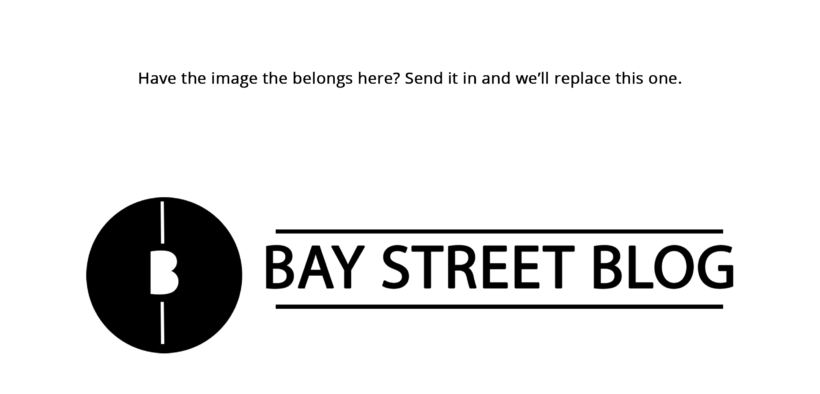15 Ways to Save for a House Downpayment
Share

Heated real estate markets are showing no signs of cooling down – with growing demand, derived from strong job markets, immigration, all time low interest rates, and low supply. In some regions, such as Toronto and Vancouver, house prices have been facing double digit, year over year growth. Despite the circumstances, 82% of non-homeowner Canadian millennials have the intention of buying a house within the next five years, according to a recent HSBC survey (Globe and Mail).
Below are the 15 ways to save for a house downpayment. Being strategic with your money, and following a budget can help you achieve the goal of buying a house.
-
Automatic Savings Plan
This is the key ingredient to a successful savings strategy. It’s as easy as setting up automatic contributions to your savings accounts (registered or non-registered). I recommend setting the automatic contributions when your paycheque comes in. This savings strategy basically forces you to save your money, before it is spent.
-
Registered Savings Accounts
There are two types of registered savings accounts that can help you save for a house downpayment – Tax Free Savings Accounts (TFSA) and Registered Retirement Savings Accounts (RRSP). TFSAs provide the benefit of tax free capital gains, and RRSPs have a Home Buyers’ Plan (HBP), which allows first time home buyers to withdraw up to $25,000 per calendar year.
-
Strict Budgeting
As mentioned in the Millennial Savings Guide, managing your personal finances should be simple – and keep it simple to three factors: cash inflow, cash outflows, and your personal finance goals. Create a budget, and maximize your possible savings. It’s easy to lose track and end up overspending, leading to credit card debt.
-
Cut Down on Your Expenses
Personal finance also requires that creative aspect – coming up with different ways to save. This is a simple as taking the public transit more often. Buying a car can yield to monthly carrying costs north of $600 (depending on where you live). Using public transportation costs only a fraction of this amount (i.e. TTC’s metropass costs $146.25/month for adults, and $116.75 for post-secondary students, seniors, and students aged 13 – 19).
-
Consolidate Your Debts
Consolidating your debts can help you super-save for a down payment. The average Canadian credit card interest rate is 14.3% (Financial Post). Realistically, if you apply for a regular credit card, without opting for the low interest rate option – you’ll most likely be paying around 20% in interest, if you do not pay off your statement balance. If you have high interest rate credit cards, consider consolidating your balances into a Personal Line of Credit – typically much lower interest rates, compared to credit cards. It can range anywhere from 3% – 11% – depending on your credit score, income, and total debt servicing ratio. Another solution is to call up your credit card company and opt for the lower interest rate option. Saving on interest payments gives you more room to invest/save for a down payment.
-
Lower Your Monthly Housing Costs
Some millennials move in with their parents/in-laws, or rent a cheaper unit in order to super save for a house downpayment. Renting a cheaper unit may consist of moving further away from the city’s core and commuting, however this would be worth it considering you’ll be able to save up faster. In 2016, a Toronto subway rent map shows that renting a 1 bedroom apartment at Union Station costs approximately 50% more than the equivalent apartment at Kennedy Station.
-
Eat Out Less
Food is a big weakness for many people. I’m sure your credit card statements are basically a list of the food you purchased. It’s much cheaper to do grocery shopping and cook your own meal. You can save approximately $2610 alone on lunch, assuming you purchase lunch at work/school every day (approximately $10).
-
First Time Home Buyers Programs
This one is more for when you’re about to purchase your first home. Check your respective jurisdiction for any programs that provide incentives to first time homebuyers. One of the most popular incentives is the First Home Boost program on the Wyatt Condos – a pre-construction in the eastern side of downtown, Toronto. There are other incentives, such as the first time home buyers’ land transfer tax rebate.
-
Shop When There’s a Sale
There are many ways to save money on clothes shopping. These days, it’s easy to find a deal – through the frequent sales at stores, or online shopping. Always ask for a discount. Some stores, such as Club Monaco, offer discount to students. In general, there are many stores that do accept the SPC Card, which provides a 10% – 15% discount.
-
Cash Back Credit Cards
There is an ongoing debate on the best credit card offer – cash back vs. travel rewards. In the case of saving up, cashback may be the most useful. Cash back credit cards typically ranges from 1% – 2% on your purchases. The cashback received can go towards paying down your debt and/or your savings.
-
Spend Within Your Limits
Many people have the habit of falling into the extravagant spending trap – draining the bank account and leading to high credit card balance. In other words, this spending habit will make you broke. As Umang Bengali mentioned in his article, Mastering Your Finances, that $2000 suit or Luis Vuitton bag can wait a few years until you’re closer to reaching your financial goals. This relates to one of Warren Buffett’s most popular quotes – “if you buy things you don’t need, soon you will have to sell things you need.”
-
Birthday Gifts/Windfalls
Personal Finance Author, Ramit Sethi recommends saving at least 50% of birthday gifts (cash)/windfalls in his book, I will Teach You How to Be Rich. It’s nice to receive additional cash – however, it’s easy to forget that it is not ‘spending money.’ Save a portion of it, and super save for your financial goal of saving for a house downpayment.
-
Credit Score
Your credit score basically determines how healthy your personal finances are. Having a higher credit score can save you thousands of dollars in interest, and you would typically get approved for a higher amount for lines of credits, mortgages, and credit cards. There are various ways to improve your credit score. Having a credit score above 700 generally gets you approved for loans at reasonable interest rates.
-
Set a Goal & Timeframe
Knowing your end goal for your personal finances make it significantly easier to manage your personal finances. Globe and Mail has a useful Down Payment Tool that estimates when you will be able to buy a home, based on how much you have saved, and how much money you’ll be saving each month.
-
Keep an Eye on the Real Estate Market
Work with an agent – there’s always that one deal that is considered as a ‘steal.’ When considering a pre-construction home, consider all units and evaluate the price points. Look into the smaller units, they are typically cheaper and offer the same practicality.
Bottom Line
In terms of income, you may consider side gigs for extra cash, such as freelance work. Saving up for a house downpayment requires a realistic financial plan. Smaller downpayments typically yield to higher CMHC mortgage premiums. It’s best to aim for a 20% downpayment, in order to have lower monthly payments (and avoid the CMHC premiums).
Below is a tool by RateHub that determines how much your CMHC premiums would be, if you were to pay less than 20% down payment. The minimum downpayment required to purchase a home under $500k is 5%, and 10% for the portion of the home price between $500k – $1,000,000. Homes over one million dollars require a downpayment of 20%.
CMHC insurance calculator
This widget is no longer available. If you are the owner of this site, please contact mortgagewidget@ratehub.ca to get Ratehub.ca 's newest mortgage widgets.
All in all, homeownership is possible – it requires strategic management of your money and a disciplined financial plan.
You May Also Be Interested In: Down Payment Rules – Should I Wait for 20%?
Writer: Jelani Smith
Disclaimer: All investing can potentially be risky. Investing or borrowing can lead into financial losses. All content on Bay Street Blog are solely for educational purposes. All other information are obtained from credible and authoritative references. Bay Street Blog is not responsible for any financial losses from the information provided. When investing or borrowing, always consult with an industry professional.








Bay Street Blog Newsletter
Click here to subscribe for a financial savvy experience.
Please check your email to confirm subscription!